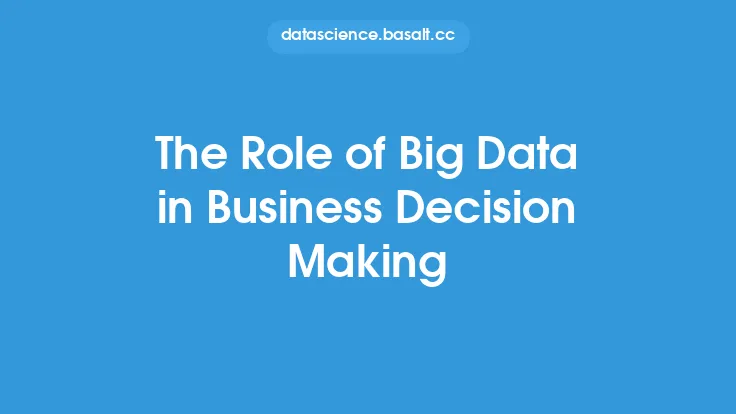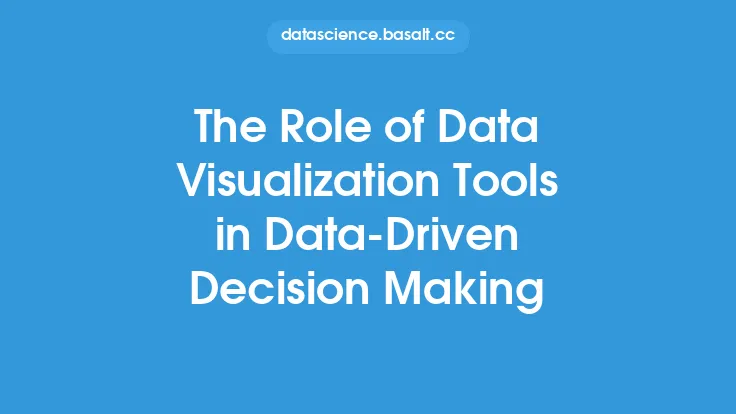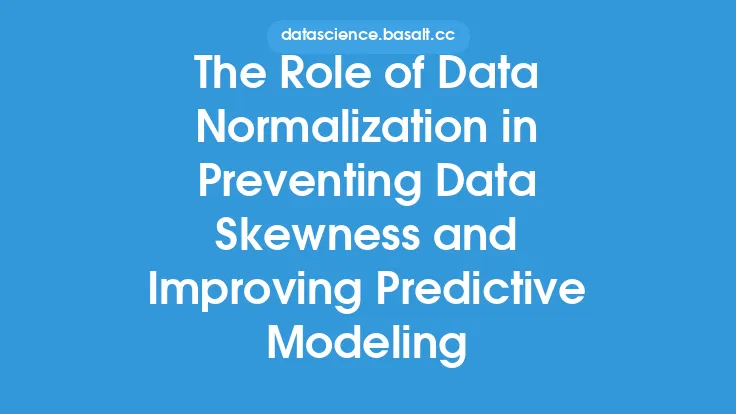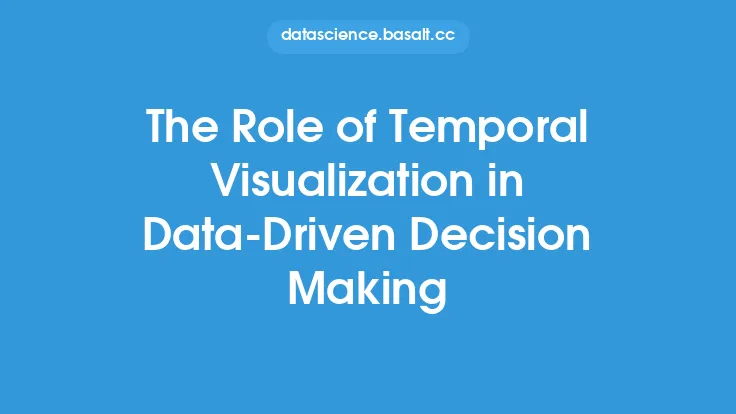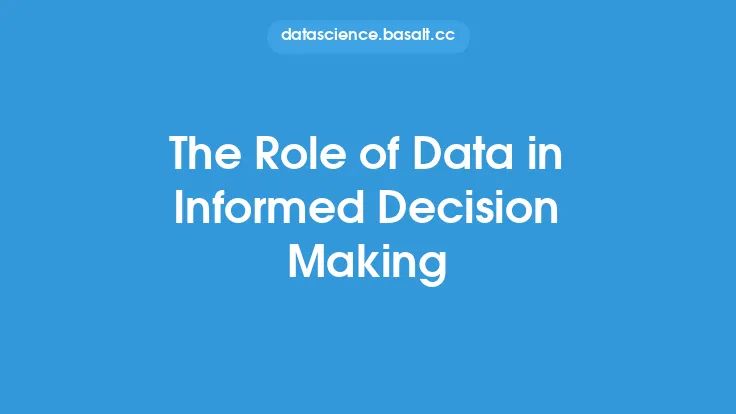In today's fast-paced and competitive business landscape, making informed decisions is crucial for driving growth, improving efficiency, and staying ahead of the competition. One of the key tools that businesses can leverage to make better decisions is predictive modeling. Predictive modeling is a statistical technique used to predict future outcomes or behaviors based on historical data and statistical models. It involves using data mining and machine learning algorithms to analyze large datasets and identify patterns, relationships, and trends that can inform business decisions.
What is Predictive Modeling?
Predictive modeling is a process that involves using statistical and machine learning techniques to develop models that can predict future outcomes or behaviors. These models are typically developed using historical data and are designed to capture the underlying relationships and patterns in the data. Predictive models can be used to forecast sales, predict customer churn, identify new business opportunities, and optimize business processes. The goal of predictive modeling is to provide businesses with actionable insights that can inform decision-making and drive business outcomes.
Applications of Predictive Modeling in Business
Predictive modeling has a wide range of applications in business, including marketing, sales, finance, and operations. Some common applications of predictive modeling include:
- Customer segmentation and targeting: Predictive models can be used to segment customers based on their demographics, behavior, and preferences, and to identify the most profitable customer segments.
- Sales forecasting: Predictive models can be used to forecast sales and revenue, and to identify opportunities to increase sales and revenue.
- Risk management: Predictive models can be used to identify and manage risk, such as credit risk, market risk, and operational risk.
- Supply chain optimization: Predictive models can be used to optimize supply chain operations, such as forecasting demand, managing inventory, and optimizing logistics.
- Pricing optimization: Predictive models can be used to optimize prices and revenue, and to identify opportunities to increase profitability.
Benefits of Predictive Modeling
The benefits of predictive modeling are numerous and well-documented. Some of the key benefits include:
- Improved decision-making: Predictive modeling provides businesses with actionable insights that can inform decision-making and drive business outcomes.
- Increased efficiency: Predictive modeling can help businesses to optimize processes and operations, and to reduce waste and inefficiency.
- Enhanced customer experience: Predictive modeling can be used to personalize customer experiences and to improve customer satisfaction and loyalty.
- Increased revenue: Predictive modeling can be used to identify new business opportunities and to optimize pricing and revenue.
- Competitive advantage: Businesses that use predictive modeling can gain a competitive advantage over those that do not, by making better decisions and driving better business outcomes.
Challenges and Limitations of Predictive Modeling
While predictive modeling has many benefits, it also has some challenges and limitations. Some of the key challenges and limitations include:
- Data quality: Predictive modeling requires high-quality data, and poor data quality can lead to poor model performance and inaccurate predictions.
- Model complexity: Predictive models can be complex and difficult to interpret, and require specialized skills and expertise to develop and deploy.
- Overfitting: Predictive models can suffer from overfitting, where the model is too closely fit to the training data and fails to generalize well to new data.
- Underfitting: Predictive models can also suffer from underfitting, where the model is too simple and fails to capture the underlying patterns and relationships in the data.
- Interpretability: Predictive models can be difficult to interpret, and require specialized skills and expertise to understand and communicate the results.
Best Practices for Implementing Predictive Modeling
To get the most out of predictive modeling, businesses should follow best practices for implementing and deploying predictive models. Some of the key best practices include:
- Start with a clear business problem: Predictive modeling should be used to solve a specific business problem or opportunity, and the problem should be clearly defined and understood.
- Use high-quality data: Predictive modeling requires high-quality data, and businesses should ensure that the data is accurate, complete, and relevant.
- Choose the right model: There are many different predictive models to choose from, and businesses should choose the model that best fits the problem and the data.
- Validate and test the model: Predictive models should be validated and tested to ensure that they are accurate and reliable, and that they generalize well to new data.
- Deploy and monitor the model: Predictive models should be deployed and monitored to ensure that they are working as expected, and that they are driving business outcomes.
Common Predictive Modeling Techniques
There are many different predictive modeling techniques, and the choice of technique will depend on the problem and the data. Some common predictive modeling techniques include:
- Linear regression: Linear regression is a statistical technique that is used to model the relationship between a dependent variable and one or more independent variables.
- Decision trees: Decision trees are a machine learning technique that is used to model the relationship between a dependent variable and one or more independent variables.
- Random forests: Random forests are a machine learning technique that is used to model the relationship between a dependent variable and one or more independent variables.
- Neural networks: Neural networks are a machine learning technique that is used to model complex relationships between variables.
- Clustering: Clustering is a machine learning technique that is used to group similar observations or customers together.
Real-World Examples of Predictive Modeling
Predictive modeling is used in a wide range of industries and applications, including:
- Retail: Predictive modeling is used in retail to forecast sales, optimize inventory, and personalize customer experiences.
- Finance: Predictive modeling is used in finance to forecast credit risk, optimize portfolios, and detect fraud.
- Healthcare: Predictive modeling is used in healthcare to forecast patient outcomes, optimize treatment plans, and improve patient satisfaction.
- Marketing: Predictive modeling is used in marketing to forecast customer behavior, optimize marketing campaigns, and personalize customer experiences.
- Sports: Predictive modeling is used in sports to forecast game outcomes, optimize player performance, and improve fan engagement.
Conclusion
Predictive modeling is a powerful tool that can be used to drive business outcomes and improve decision-making. By leveraging predictive modeling, businesses can gain a competitive advantage, improve efficiency, and drive revenue growth. However, predictive modeling also has some challenges and limitations, and businesses should follow best practices for implementing and deploying predictive models. With the right techniques, tools, and expertise, predictive modeling can be a valuable addition to any business's analytics toolkit.
